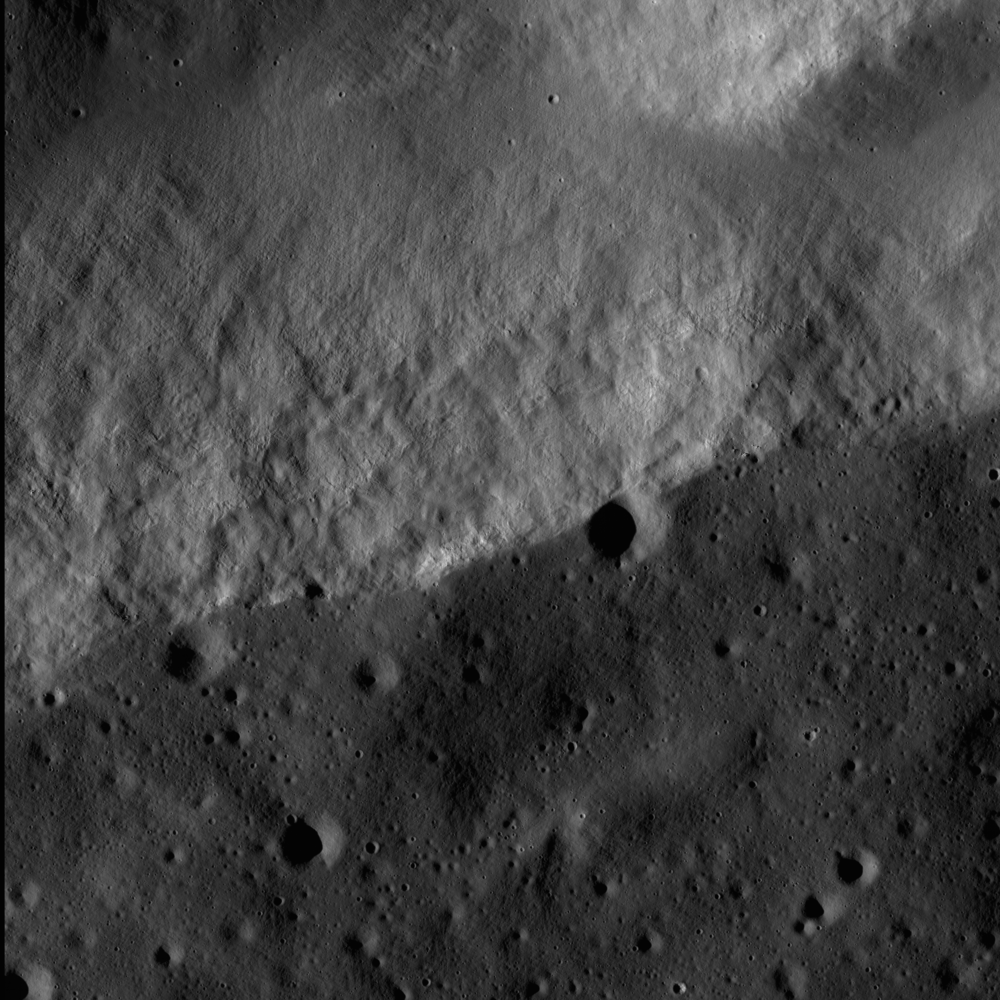
Rim and ejecta of Timocharis, a nearside Eratosthenian-aged impact crater located in southeastern Mare Imbrium. The complete NAC frame cuts through the center of the crater revealing a rich array of details of the interior floor. Timocharis is almost 33 km wide, and has fairly typical morphology for a crater this size. In the full NAC strip, you can see the terraced crater wall and the shadow of the well-defined central peak complex (the central peak itself is just to the west, outside of the frame). The ejecta blanket is the hummocky terrain immediately adjacent to the crater and (as you can see in an oblique Apollo Metric image) eventually thins out to smaller "fingers" of ejecta, almost resembling the roots of a willow tree, outside of the NAC frame. The ejecta blanket is covered with numerous smaller impacts, called secondary craters, which occurred after the formation of Timocharis.
Timocharis is important to lunar geologists because it formed fairly recently in the lunar scheme of things, and serves as a guidebook to how older, similarly-sized central peak craters (now degraded after billions of years) probably looked earlier in lunar history. Central peaks are formed by elastic rebound as the crust "decompresses" after the shock of impact, bringing up materials from depth. Depending on the size of the crater, these deep materials could possibly be from as deep as the bottom of the crust (like Copernicus). Studying these deeper rocks give lunar geologists important insights into the nature and structure of the Moon and the other terrestrial planets, like Mercury and Mars. Craters with central peaks like Timocharis are therefore high-priority targets for scientific investigations using orbital sensors as well as the vital follow-up exploration by human explorers.
Browse the whole NAC image!
Published by Samuel Lawrence on 9 September 2009